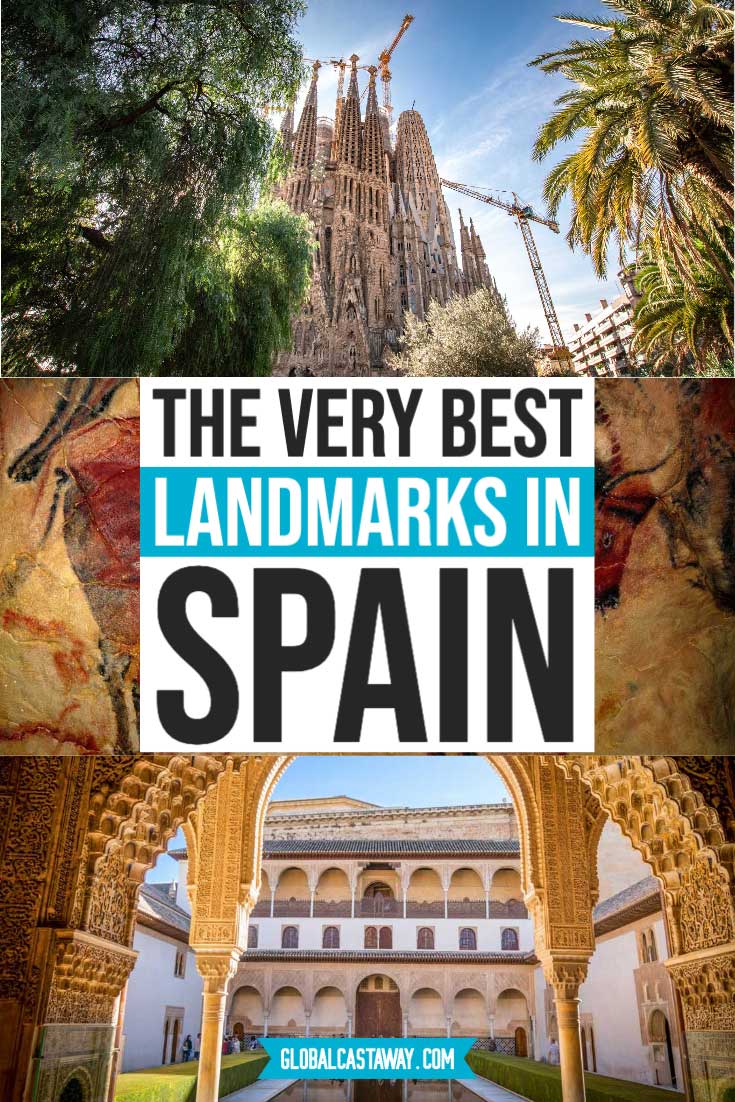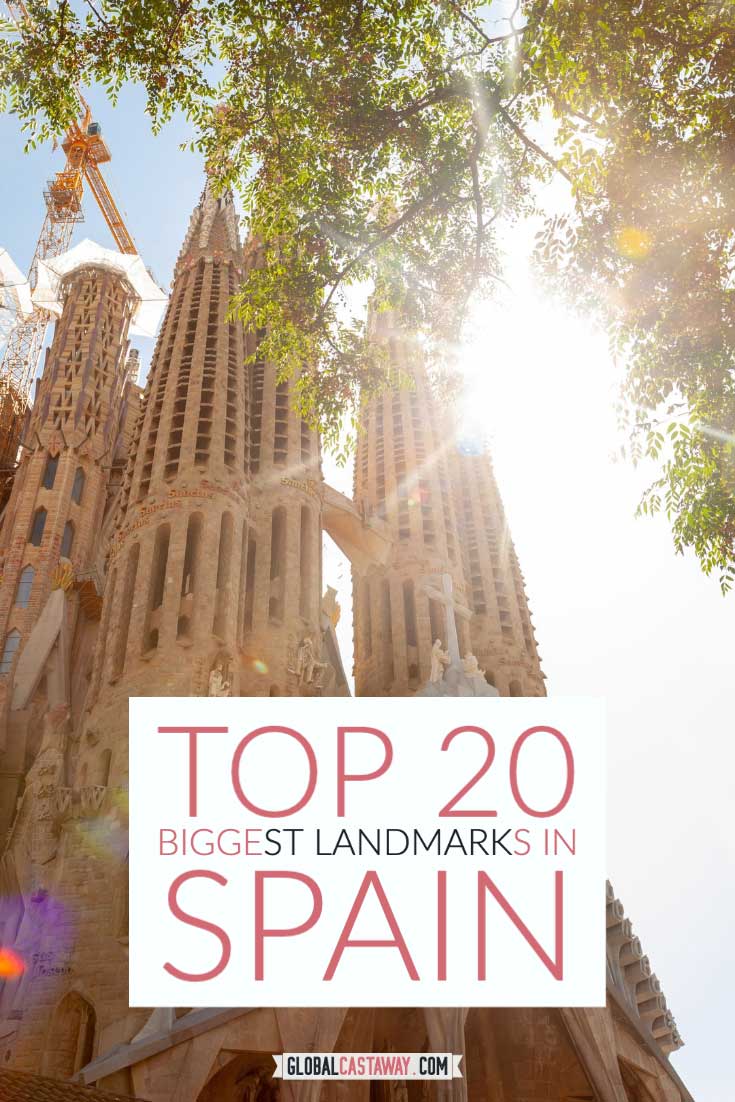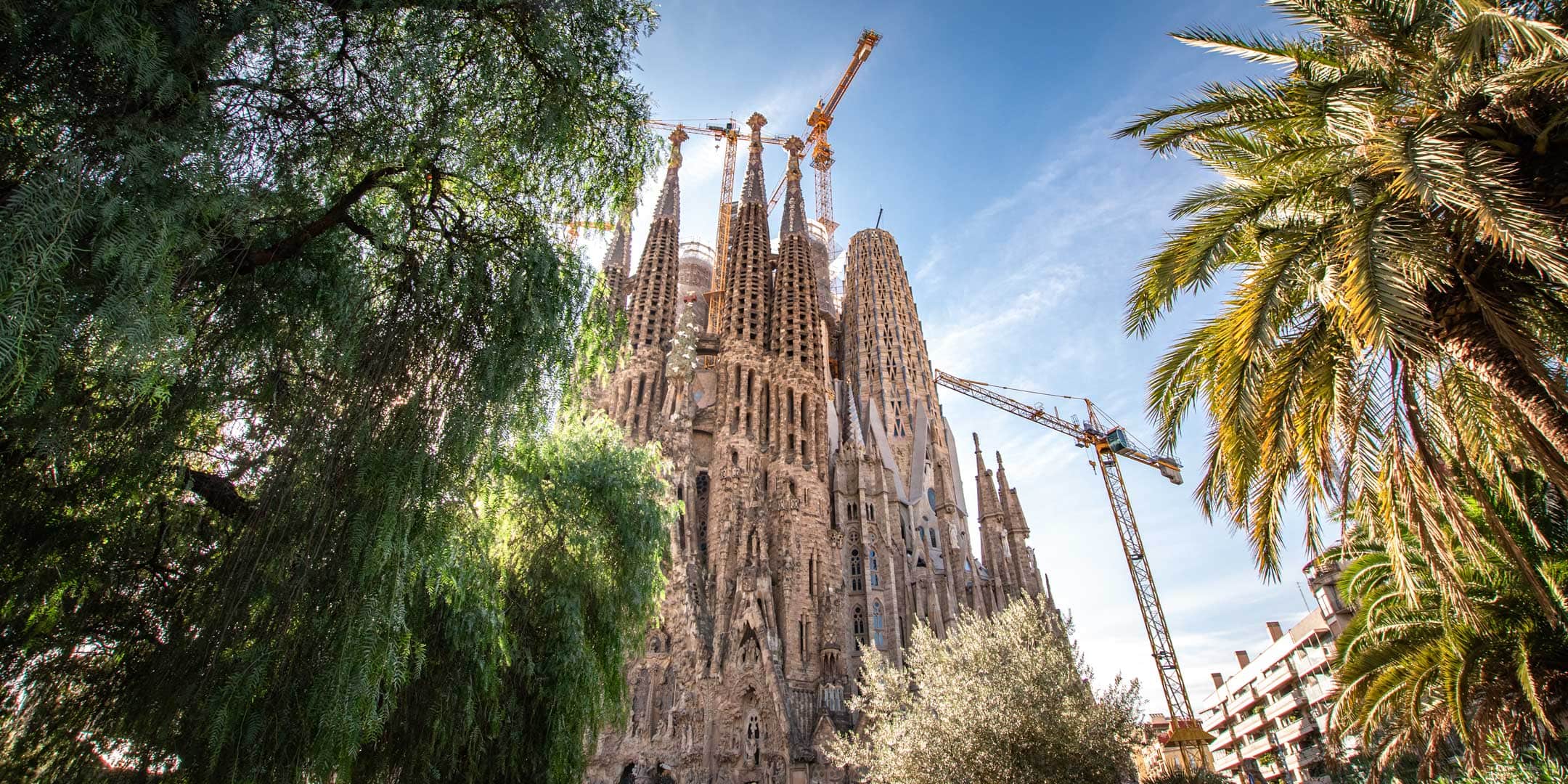We all know that countries in Europe are full of global landmarks. France has the Eiffel Tower, England offers Big Ben while the Colosseum can be found in Italy. But what are the biggest landmarks in Spain? Is it really possible, a country as popular as Spain, to have nothing in that department? Of course not. Spanish landmarks may not be on the same global icon level as the three mentioned above, but they are very highly-rated and a pure joy to explore. Prepare for a virtual adventure like no other cause these are the top landmarks in Spain!
Sagrada Familia, Barcelona
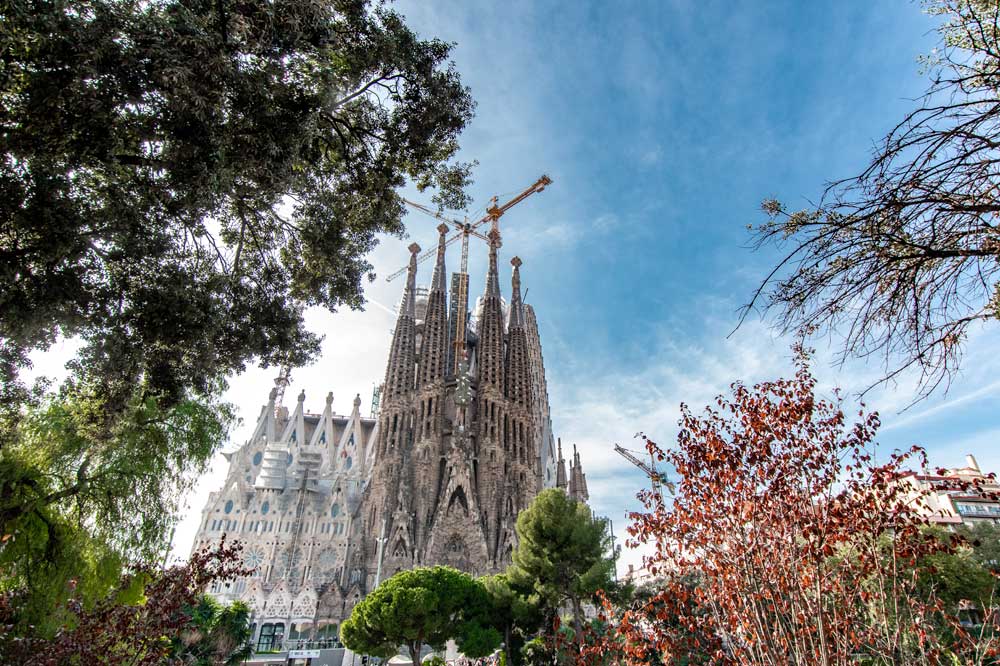
Sagrada Familia is undoubtedly one of the biggest landmarks in Spain and Europe. It may not be on the same level of popularity as the Eiffel Tower, but it’s on its way of getting there. Located in the beautiful city of Barcelona, Sagrada Familia is the pinnacle of the genius of Antonio Gaudi.
The basilica and its extraterrestrial architecture style are genuinely one of a kind. Blending masterfully religious symbols and natural elements with Gaudi’s signature style, Sagrada Familia is something everybody should see at least once in its life.
A curious fact about Sagrada Familia is that it’s still under construction. What’s odd about that? It’s unusual because the construction process started in 1882, and it’s expected to be finished in 2026. That is almost 150 years of construction works – 10 times longer the Great Pyramids and 123 years more than the Taj Mahal!
Casa Batllo, Barcelona
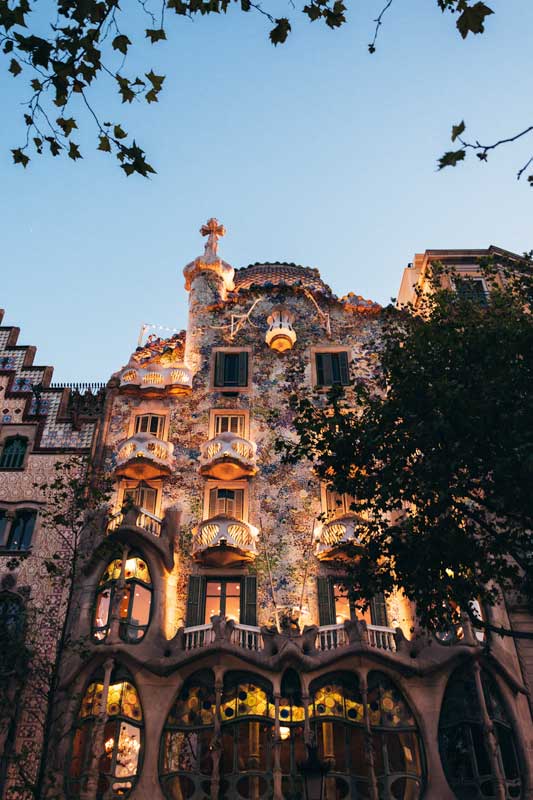
A UNESCO World Heritage Site since 1984, Casa Batlló is another oddly-shaped building left to us by Gaudi. Also known as Casa dels Ossos (House of Bones), this incredible building offers a journey through a fantasy world inspired by marine-life colors and shapes.
Your visit inside the casa would not only be guided by a fun AR tablet-guide but will also show you the dragon that sleeps on the roof. Casa Battlo is a magical place that embodies Barcelona’s spirit and offers a fun afternoon for the entire family.
Parc Guel, Barcelona

The prime park in Barcelona is also one of the most famous landmarks in Spain. Designed (again) by Antonio Gaudi, Parc Guel has an incredibly picturesque section that is often used for posters advertising the city.
While I find the place to be quite overrated, spending some time in a park is never a bad idea, and having a colorful Gaudiesque terrace, there is only a plus.
See Also: Top 20 Landmarks in Greece
Montserrat Monastery, Catalonia
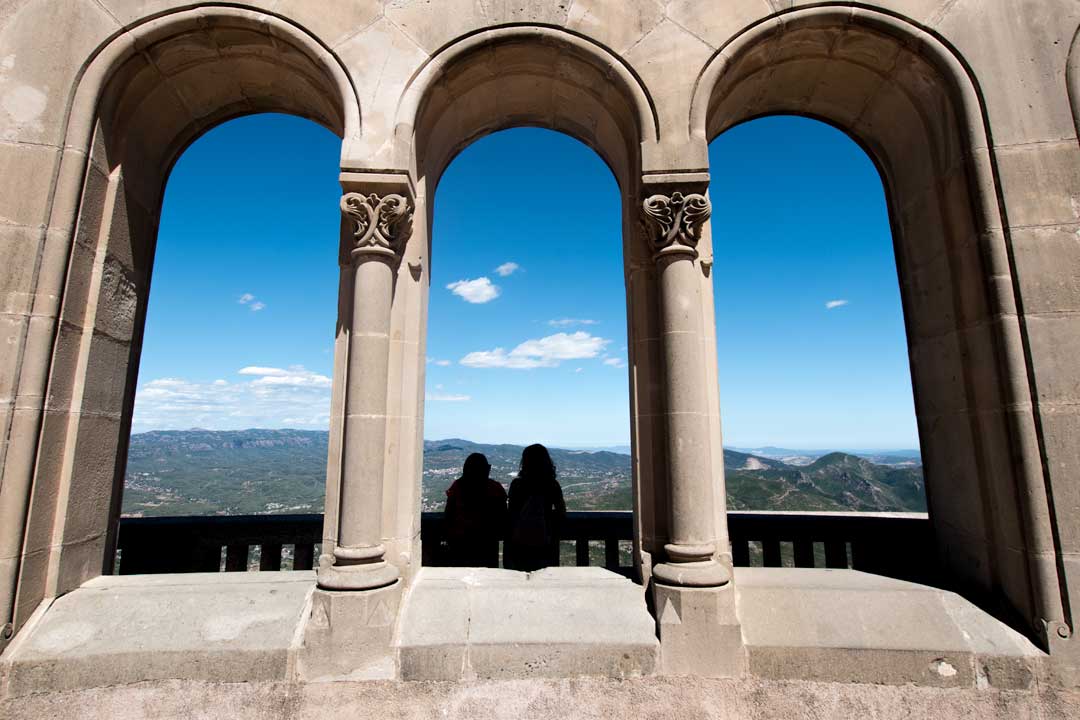
It’s time to get out of Barcelona, but we won’t go very far. Located just 45km away from the city, the Montserrat Monastery is one of the most popular day-trips in the area.
Combining the stunning nature of the mountain of Montserrat with the chance to see the 12th-century statue of the Black Madonna (patron saint of Catalonia), Santa Maria de Montserrat Abbey allows you to experience the religious culture of Catalonia while taking a break for the hustle of the big city. My journey there turned out to be one of the most pleasant day-trips I’ve ever had, earning the Montserrat Monastery its place on my book as one of the best landmarks in Spain!
Royal Palace, Madrid

It’s time to leave Gaudi and Barcelona behind and make our way to the capital of Spain – Madrid. The Royal Palace of Madrid, also known as Palacio Real de Madrid is the official residence of the Spanish Royal Family (although they live and work in another palace). It was built in 1735 on top of the previously burned down Royal Palace.
The most impressive part of Palacio Real is its interior. Opulent rooms decorated with masterpieces by Goya and Velasquez awaits everyone who decides to go on a tour there. With its incredible cultural and historical value, the Royal Palace is a definite must-see for anyone who visits the Spanish capital.
Museu Nacional de Prado, Madrid
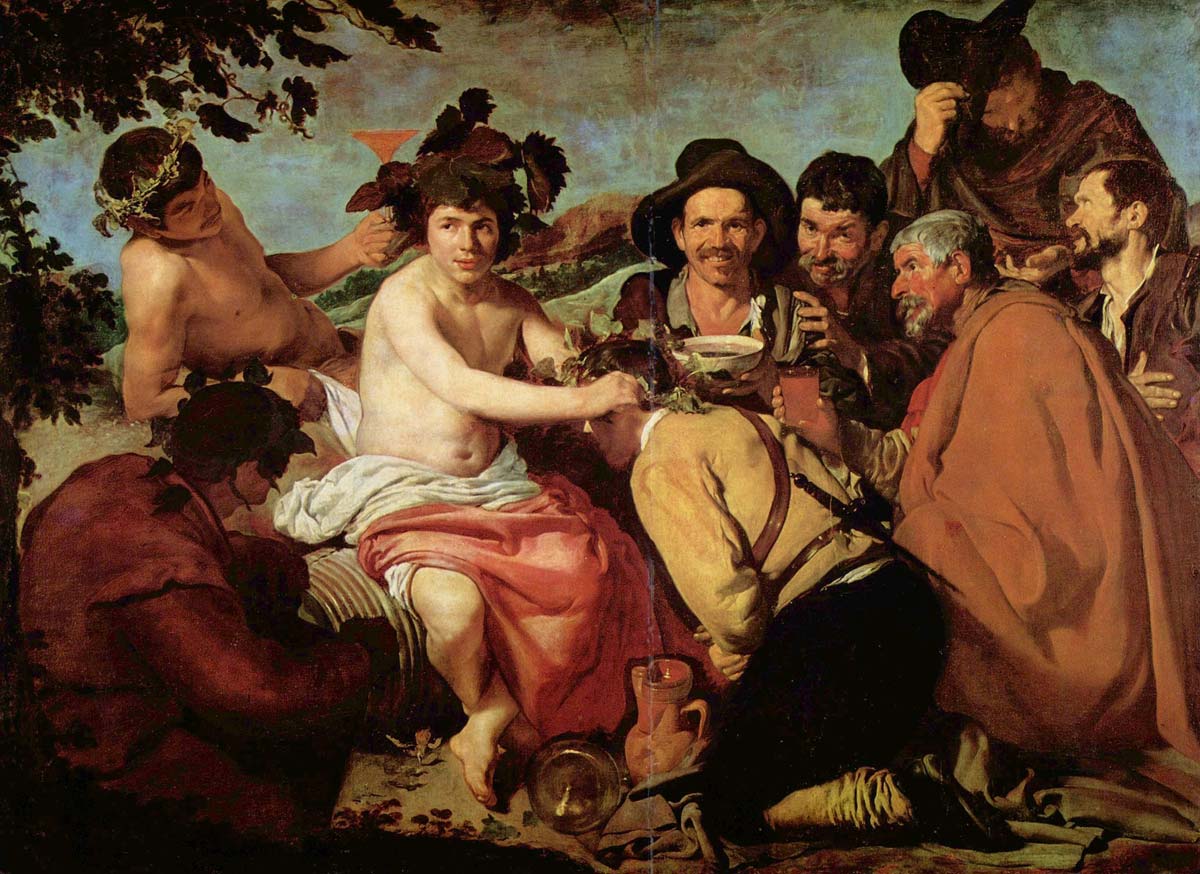
Madrid is famous not only for being Spain’s capital city but also for being one of the most artistic cities in the world. Priding itself as the home of the Golden Triangle of Art, there’s hardly an art enthusiast who doesn’t dream of visiting Madrid.
The most well-known museum of the triangle is the Prado Museum. Featuring masterpieces of the most recognizable Spanish masters like El Greco, Francisco de Goya, and Diego Velasquez, alongside other art titans like Bosch, Rubens, and Raphael, Prado has one of the most abundant collections of Renaissance, Spanish Baroque, and Flemish art 9n the world.
Being one of the most globally recognizable museums, Prado easily cements its spot as one of the top landmarks in Spain.
Reina Sofia, Madrid
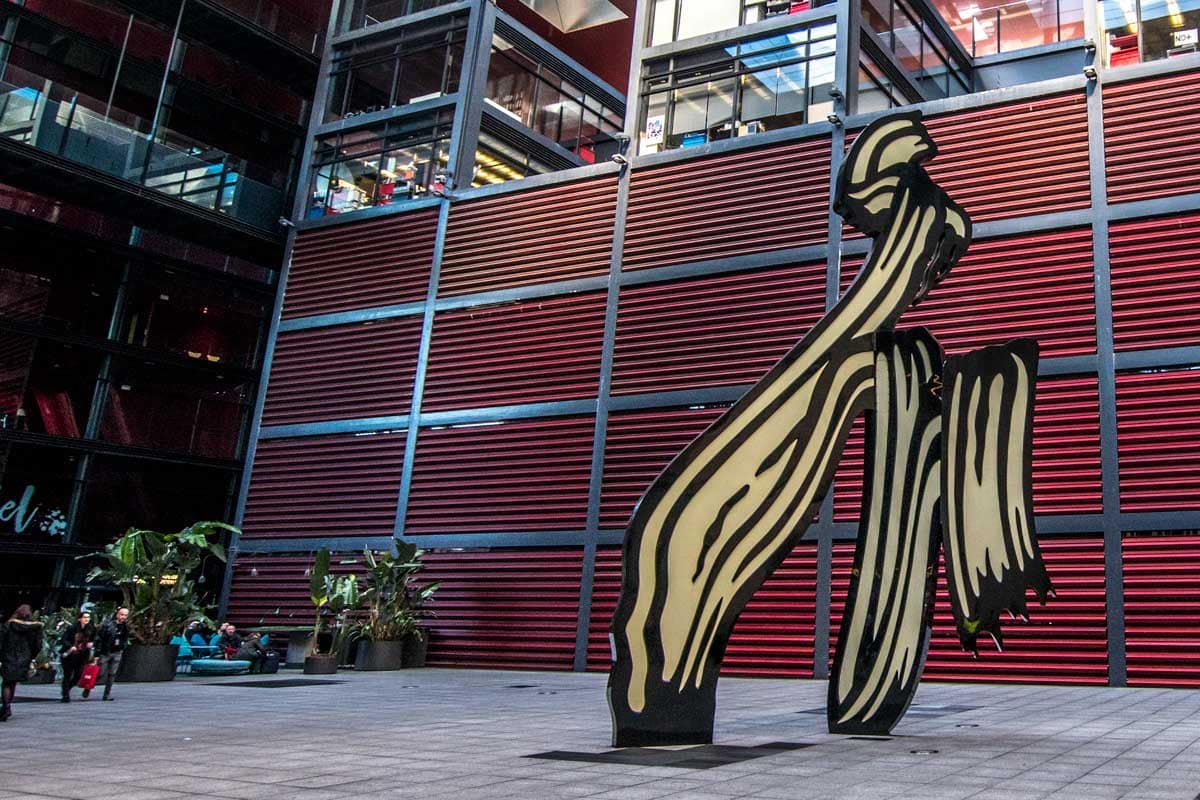
To be considered among the very best art cities on the globe, you need to have more than one top museum, right? Right! Here it is one of the biggest and most famous modern art museums in the world – Reina Sofia.
Named after Queen Sofia of Spain, the iconic art museum offers a combination of modern art installations (such as old TV’s, light illusions, etc.) and paintings of some of the most recognized modern Spanish masters such as Pablo Picasso and Salvador Dali. The museum is also home to Picasso’s most famous painting – Guernica.
Plaza Major, Madrid

We continue our journey around Madrid, but this time we won’t be exploring an art museum or a palace but the favorite gathering spot of both locals and tourists – Plaza Major.
Built in 619 during the reign of Phillip III, Plaza Major consists of an ample rectangular space that is surrounded by impressive Baroque architecture and is dotted with countless cute (and expensive) cafes.
If you love a good photo, I recommend trying to get up around sunrise when the plaza is free of people. You will be sleepy at first, but I promise that the results would be worth it.
Ciudad de las Artes y las Ciencias, Valencia
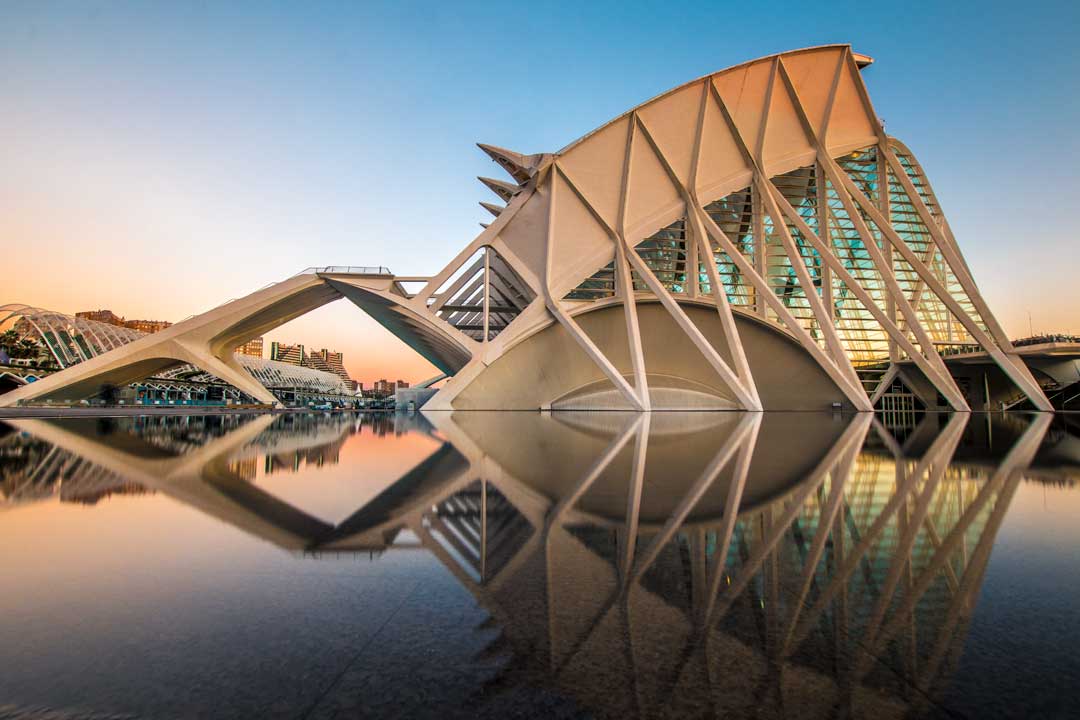
It’s time to leave the big boys (Madrid and Barcelona) behind and continue our search for the biggest landmarks in Spain throughout the country. Our first stop will be in Valencia, where we find the stunning ‘City of Art and Science’. Probably the most futuristic-looking structure in the world, this Valencia complex is often used as a background for Hollywood movies (most recently the third season of West World).
Housing the L’Hemisfèric (an IMAX Cinema, planetarium and laserium), Museu de les Ciències Príncipe Felipe (an interactive museum of science), L’Umbracle (an open structure featuring indigenous plant species and contemporary art), L’Oceanogràfic (open-air oceanographic park), Palau de les Arts Reina Sofia (an opera house) and L’Àgora (concert/sporting events hall), it’s not surprising that in 2007 the ‘City of Art and Science’ was voted as one of the 12 Treasures in Spain.
Alhambra, Granada
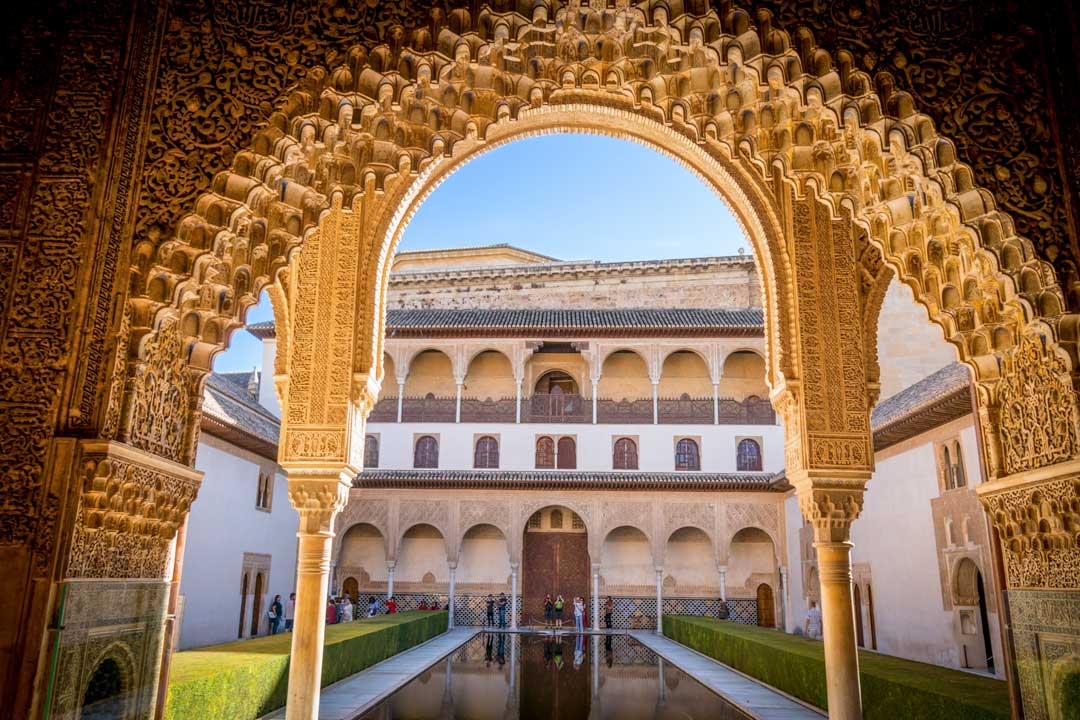
A UNESCO World Heritage Site since 1984, Alhambra is one of the most popular and revered Spanish landmarks. Rising above the modern city of Granada, the Alhambra fortress used to be the former rural residence of the emirs who ruled the Emirate of Granada in the 13th and 14th centuries.
Offering a journey through enchanting gardens, beautiful fountains and elaborate Moorish ornaments, the palace/ fortress of Alhambra gives you a glimpse into the life and culture of the long-forgotten Iberian Emirate.
Guggenheim Museum, Bilbao

Searching for the next Spanish landmark, we found ourselves in the Basque Country and, more specifically – Bilbao. There we find another odd-looking building whose innovating design is considered to be among the most groundbreaking 20th-century architecture masterpieces.
Welcome to the Guggenheim Museum – one of the most prominent modern and contemporary art museums in the world!
But don’t think that Guggenheim’s exterior is the only thing worth seeing there. The museum is famous for housing “large-scale, site-specific works and installations by contemporary artists” such as Richard Serra‘s 100-meter-long Snake and Jeff Koons‘ Puppy.
Santiago de Compostela Cathedral, Santiago
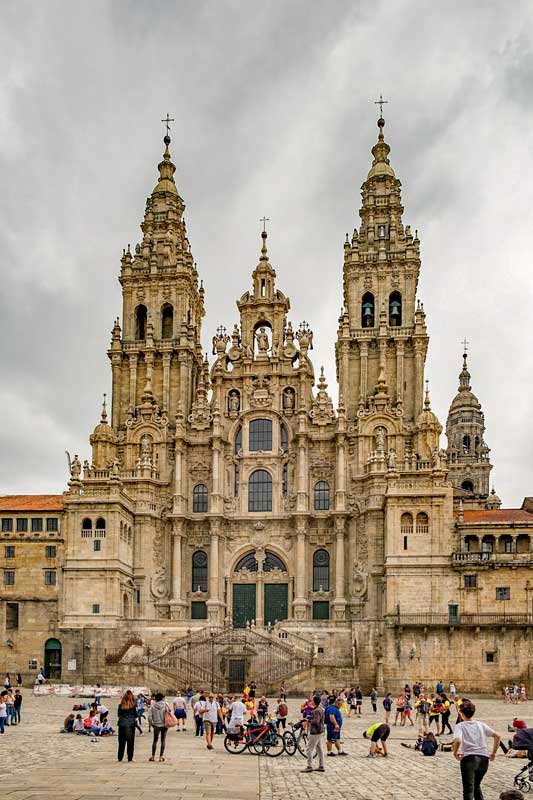
Spain is one of the bastions of Catholic fate; therefore has an abundance of cathedrals. The one in Santiago, however, is not just your regular church. Being one of the most important religious structures in the country, the cathedral was inducted as UNESCO World Heritage Site (alongside Compostela’s old town) in 1985.
Since the cathedral’s construction took over 130 years with many extensions added over the years, its interior combines many different architectural styles (Romanesque, Gothic, Baroque). Today Santiago de Compostela Cathedral is best known as the end of the popular pilgrimage route – Camino de Santiago.
Mosque-Cathedral, Cordoba

The great Mosque-Cathedral of Cordoba is a unique building with an incredible interior. A traditional mosque until the 13th century, the temple was converted to a Catholic cathedral, and eight centuries later still serves as one.
If you ever have the chance to explore the Mosque-Cathedral, make sure to check the Hypostyle Hall. Graced by dozens of two-tiered, symmetrical red and white arches, the hall was built by recycled ancient Roman columns and offers terrific photo ops.
Real Alcazar de Sevilla
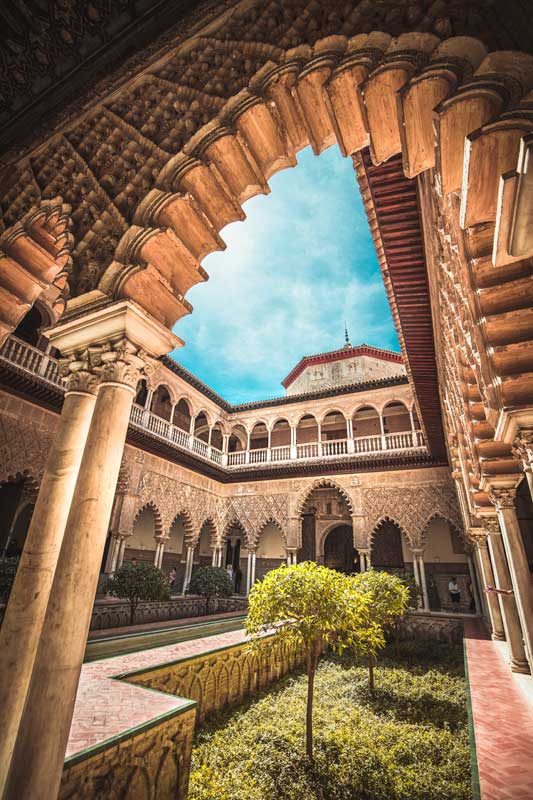
Ahh, we finally made our way to Seville. The passionate southern town has a very distinctive culture and plenty of things to see and do. If there’s one attraction in Seville that ranks a bit over the others, this is the Alcazar of Seville. A royal palace built for the Christian king Peter of Castile on top of a Muslim Alcazar (fortress) that masterfully blends a few architectural styles to offer an experience like no other.
The palace is so opulent and beautiful that the Spanish Royal Family still stays in it when visiting Seville.
Toledo’s Old City
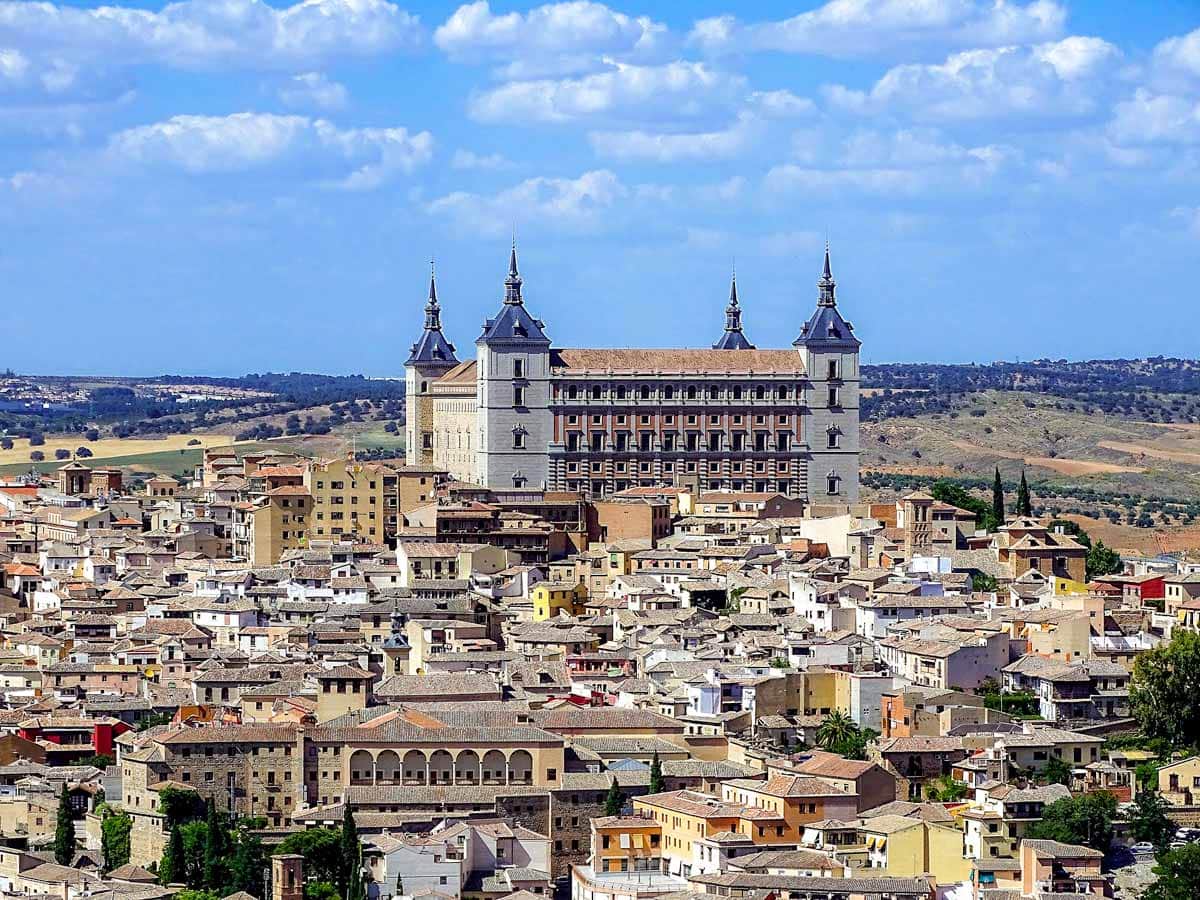
Since I can’t pick just one thing from Toledo, our next Spanish landmark is a whole town…or at least its historical center. A former capital of Spain, Toledo holds more than 2000 years of history behind its walls.
Being occupied by plenty of different tribes and nations during the centuries, today the city is a colorful mix of religion and culture.
The biggest highlights in the city include Toledo’s Cathedral, Museo del Greco, and the Alcázar, Synagogue of El Transito.
See Also: Barcelona in December
El Teide, Tenerife
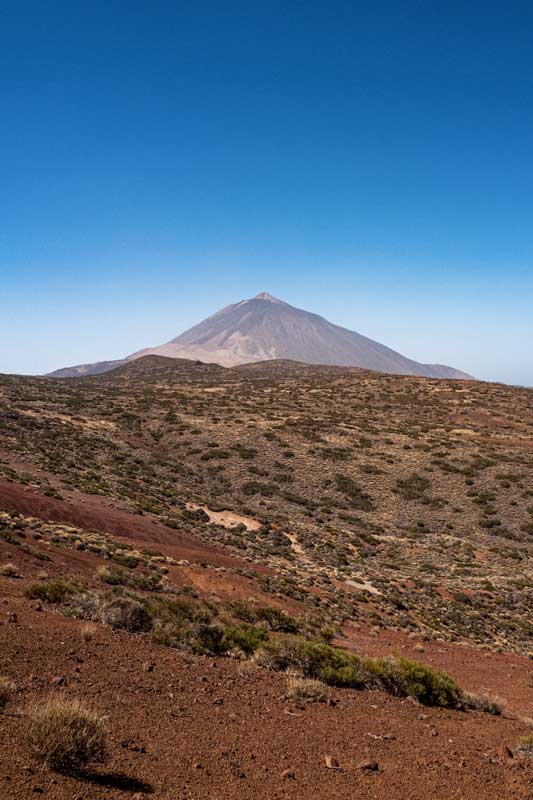
It’s not that surprising that the biggest landmarks in Spain are cultural monuments. I mean, most European countries are like that – the cultural heritage overwhelms the natural riches.
There is, however, a particular place in Spain that deserves a spot on this list. Mount Tiede is a volcano located in the city of Tenerife on the Canary Islands. A UNESCO World Heritage Site since 2007, the volcano is the most visited Spanish natural wonder, one of the most visited national parks in Europe and among the top 10 most visited in the world!
Aqueduct of Segovia
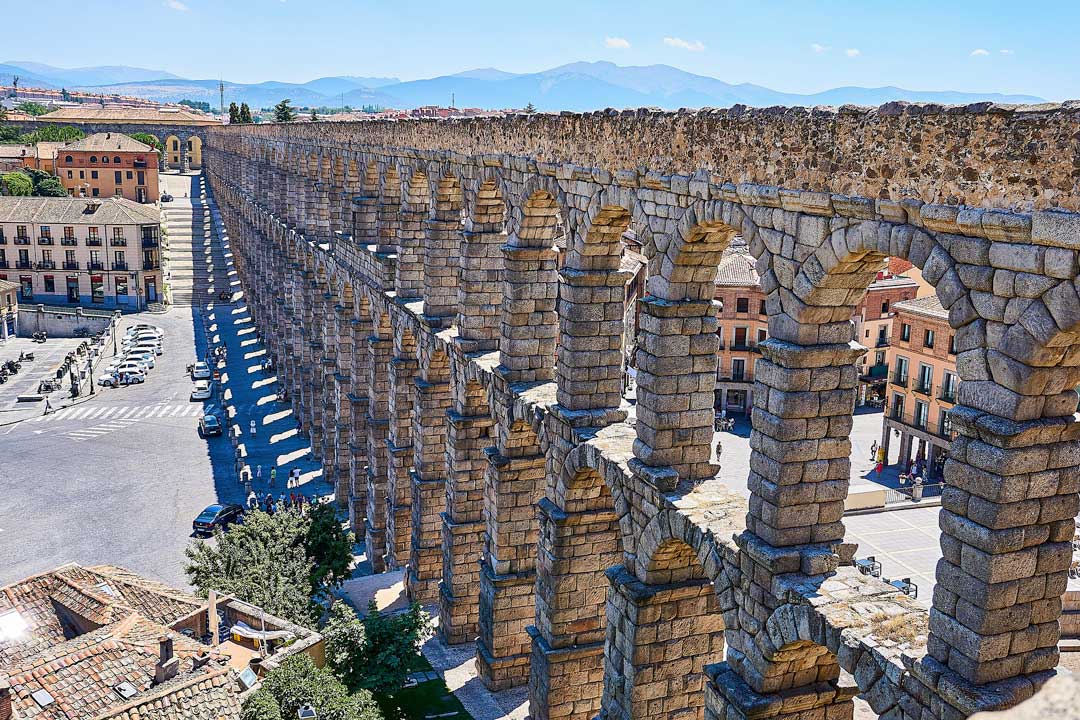
Built by the Roman emperor Trajan almost 2000 years ago, the Aqueduct of Segovia is a water-conveyance structure that still operates today. Probably the best-preserved Roman engineering work in the world, the aqueduct is a great excuse to plan a trip to the small town of Segovia and enjoy its vast cultural heritage.
Cave of Altamira, Cantabria
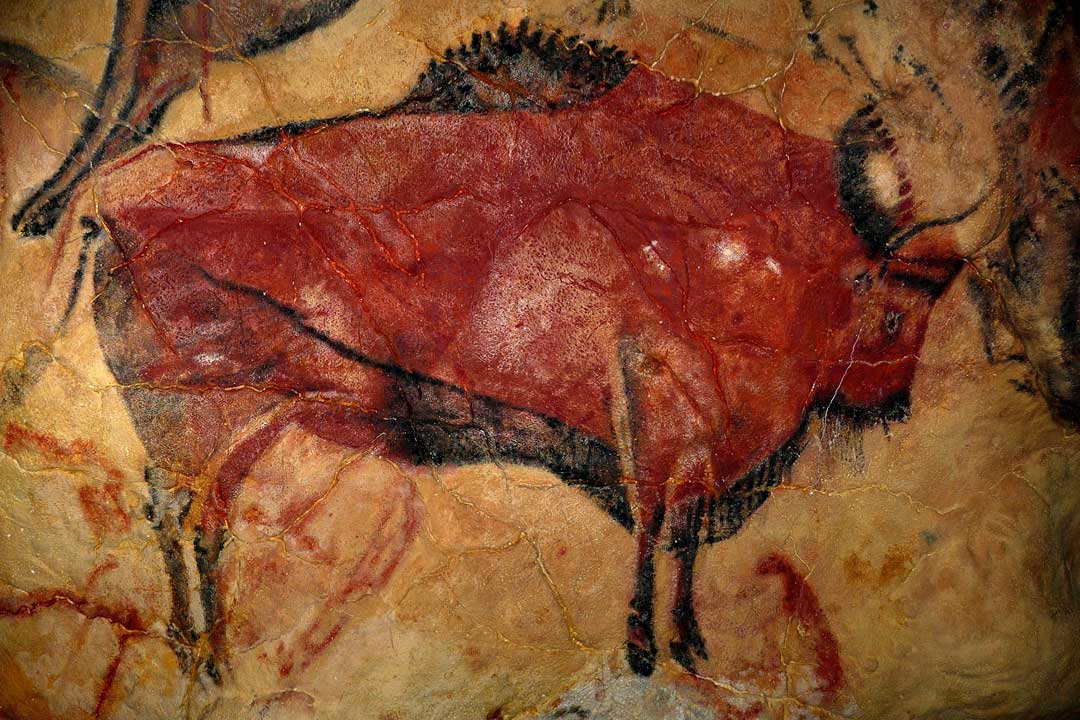
Discovered in 1868 by Modesto Cubillas, the Altamira Cave features cave drawings from as early as 34,000 BC! There are plenty of charcoal, ochre, or hematite drawings alongside the 1km long cave-corridors. The best part is the Polychrome Ceiling that depicts a herd of the already extinct steppe bison.
Unfortunately, the cave is not open for visitation, but there are many exact replicas around Cantabria.
Burgos Cathedral

Yes, another gorgeous cathedral, this time in the northern town of Burgos. Built in the 13th century, the temple is considered one of the finest examples of Spanish Gothic architecture.
A UNESCO World Heritage Site since 1984, the Burgos Cathedral is the only cathedral in Spain that has distinction independently, without being joined to the historic center of a city.
El Camino de Santiago
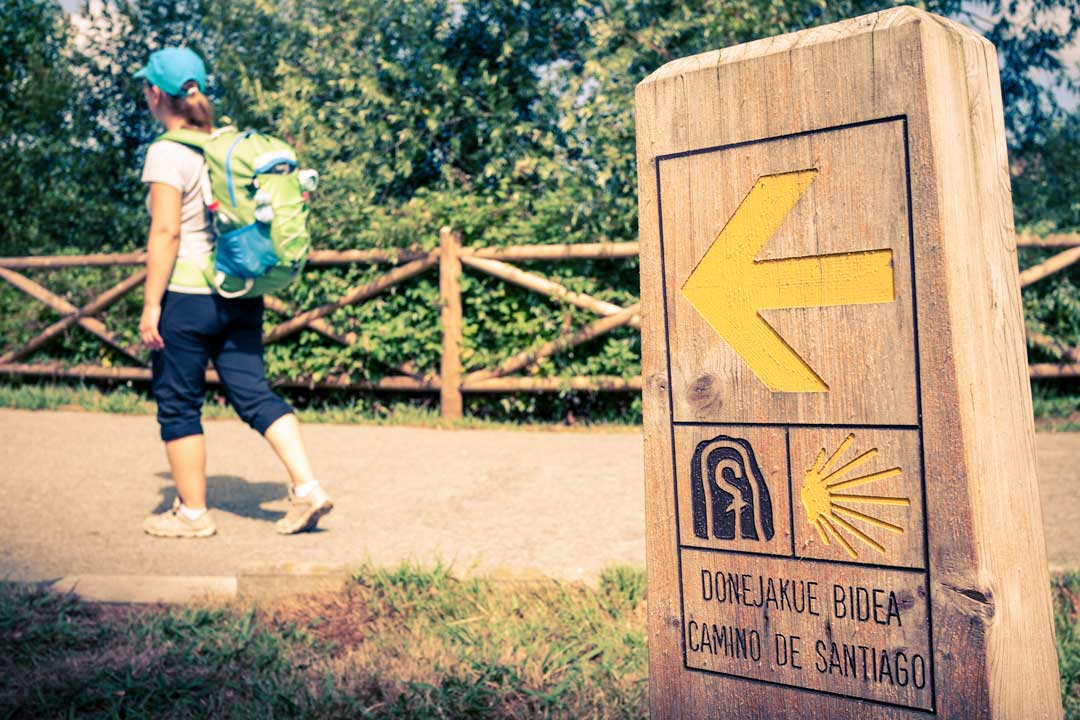
The last of the landmarks in Spain is neither a building nor a natural wonder. Camino de Santiago is the most famous pilgrimage route in the world. While the Camino has no official starting point, you need to complete at least 100 kilometers of the journey on foot and reach the shrine of James the Apostle at the Santiago de Compostela Cathedral to be able to get a certificate of completion.
With more than 200,000 participants yearly, El Camino de Santiago is undoubtedly one of the most prominent Spanish landmarks.
That’s all from me, I hope you enjoyed the top landmarks in Spain.
————————————
If you haven’t planned your trip there yet, find out how I plan my trips!
————————————
I have 26 bucket list ideas for Spain. See my impossible bucket list of 1700+ adventures!
Which one is your favorite?
Some of the above are affiliate links and I will earn a percentage of the sale if you purchase through them at no extra cost to you. This helps keep my site running – so thanks in advance for your support!

